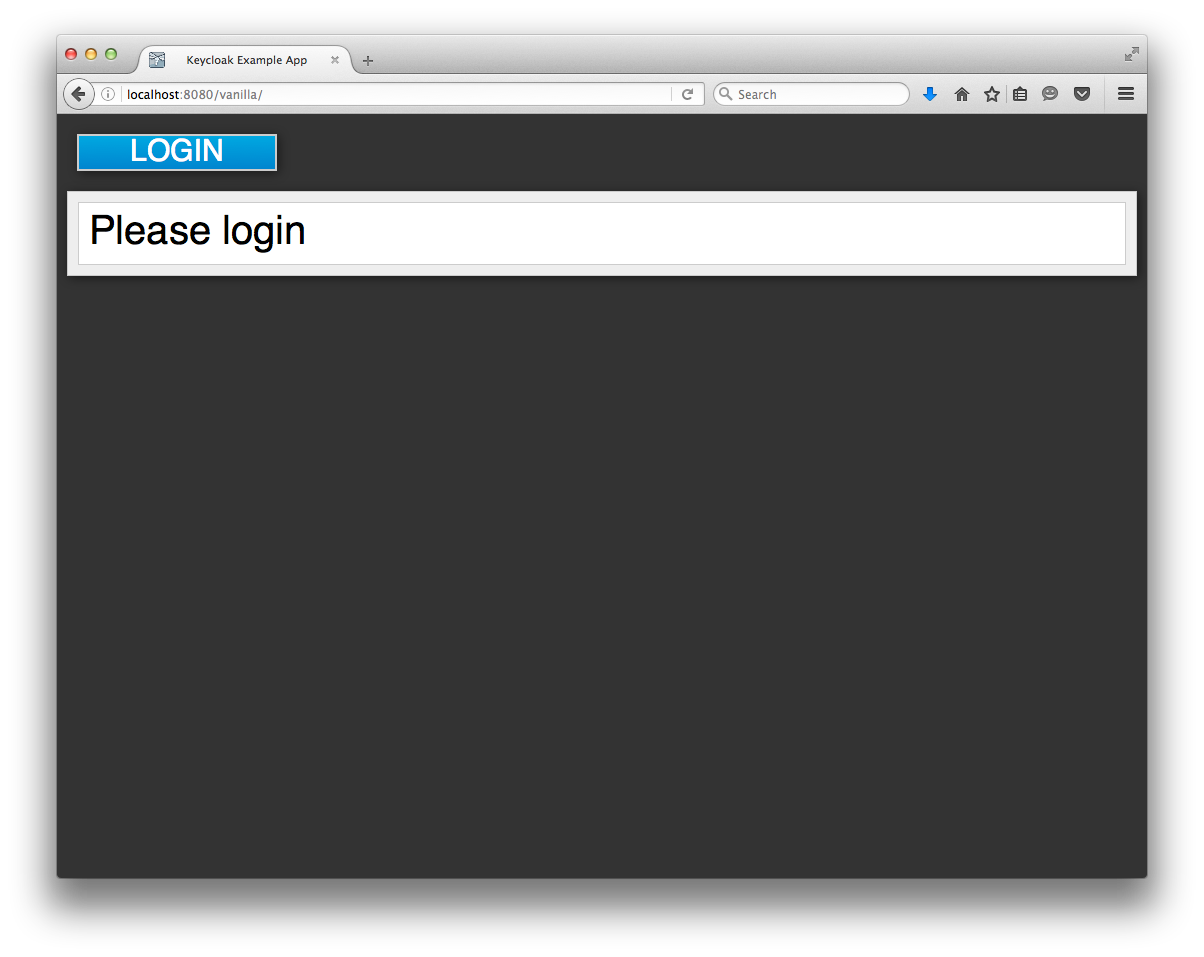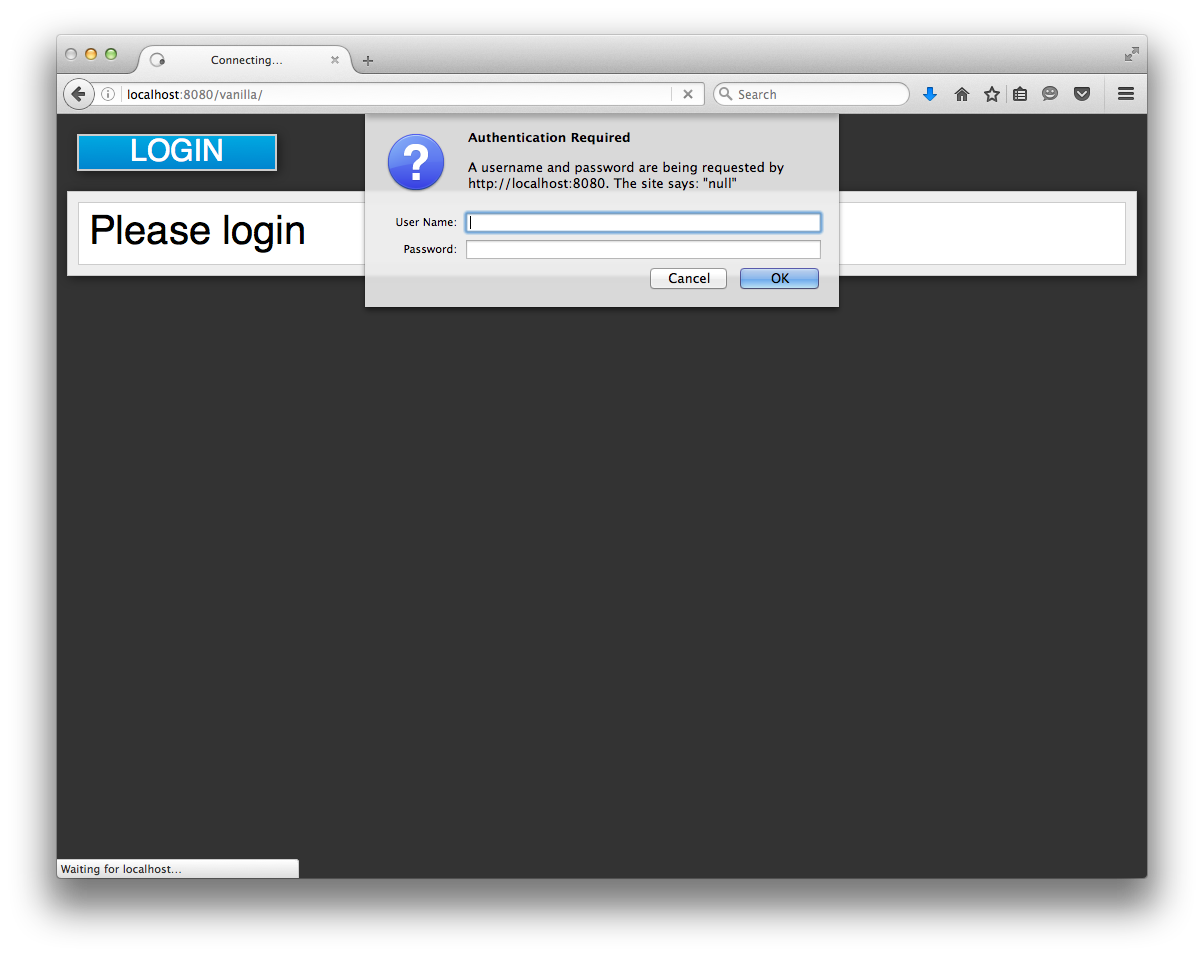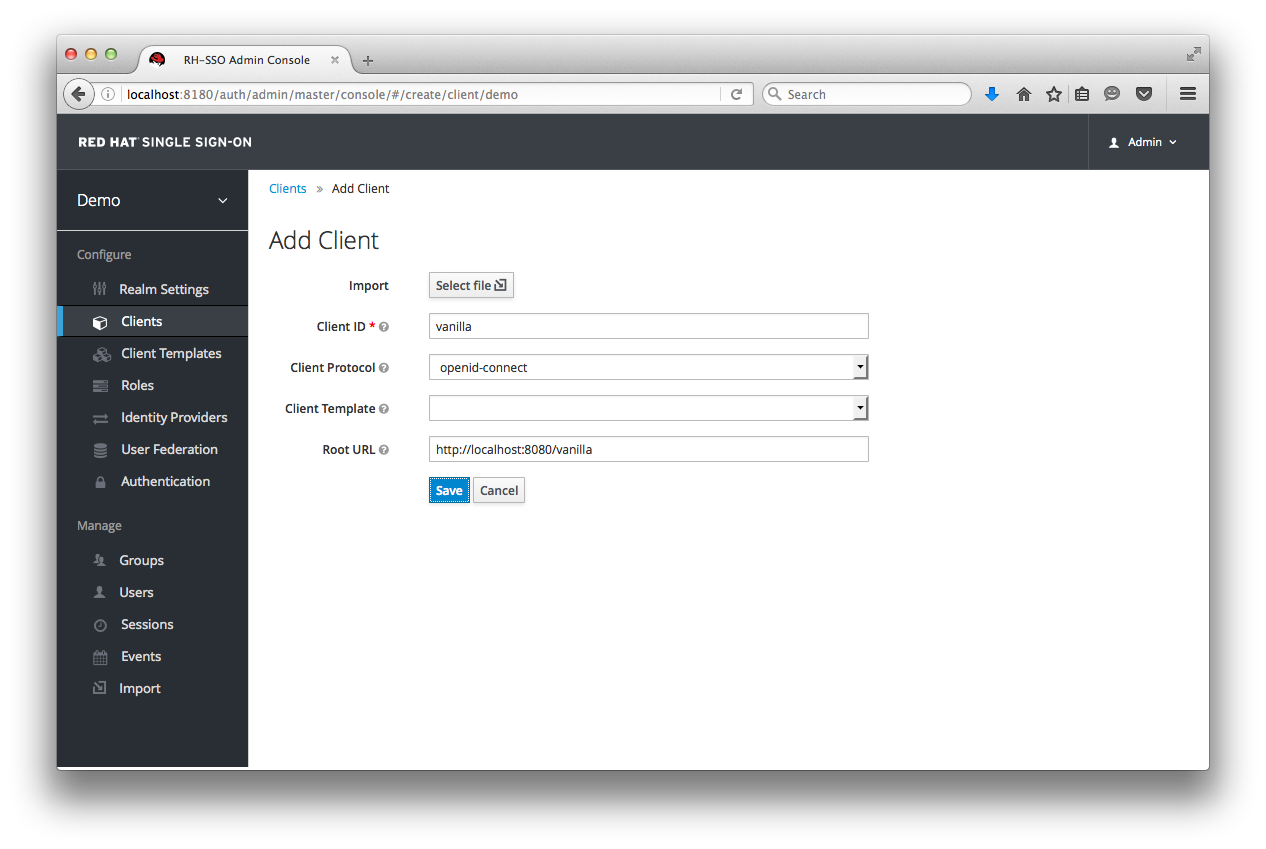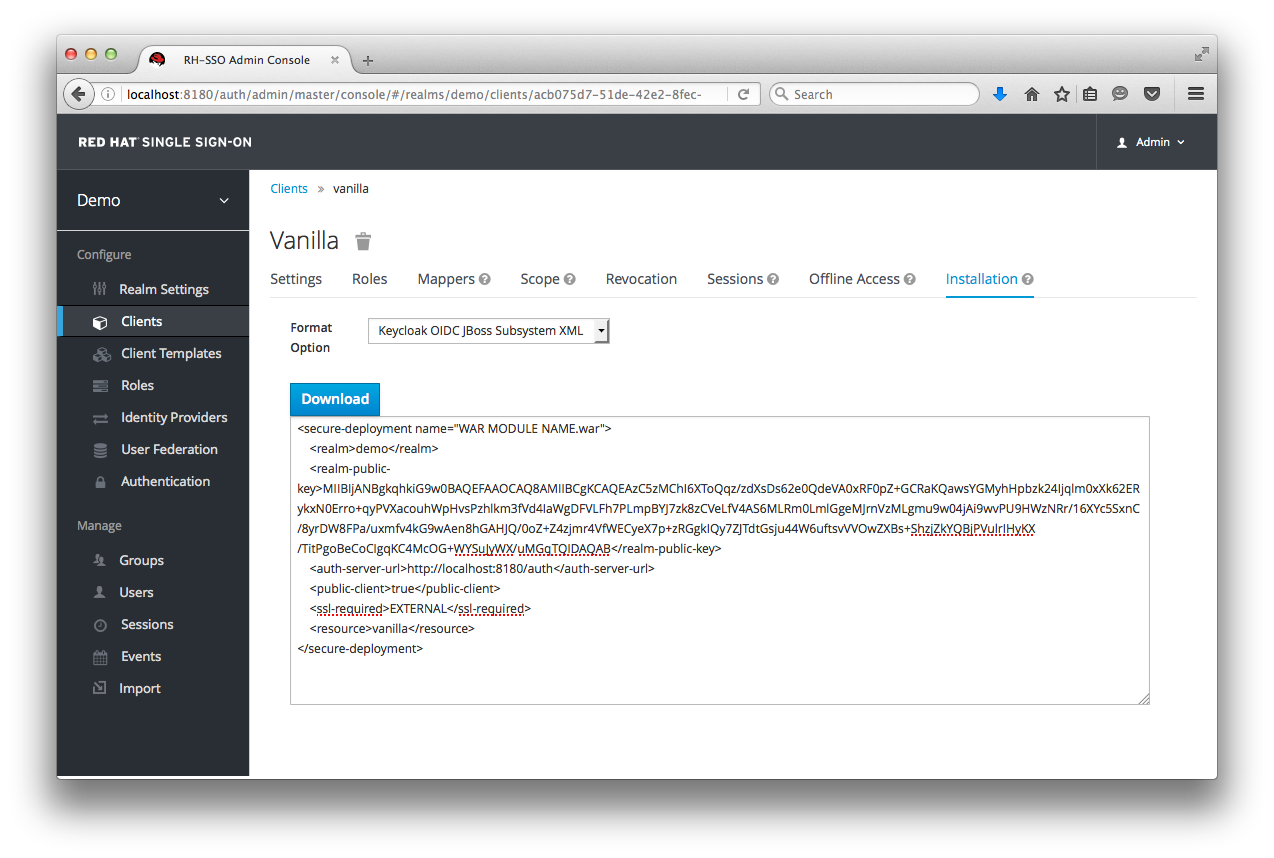-
Language:
English
-
Language:
English
Chapter 4. Securing a JBoss Servlet Application
In this section you will learn how to secure a Java Servlet application on the JBoss EAP 7 application server. You will learn how to install the Red Hat Single Sign-On Client Adapter onto a JBoss EAP 7 application server distribution. You will create and register a client application in the Red Hat Single Sign-On Admin Console. Finally, you will configure the application to be secured by Red Hat Single Sign-On.
4.1. Before You Start
Before you can participate in this tutorial, you need to complete the installation of Red Hat Single Sign-On and create the initial admin user as shown in the Install and Boot tutorial. There is one caveat to this. You have to run a separate JBoss EAP 7 instance on the same machine as the Red Hat Single Sign-On server. This separate instance will run your Java Servlet application. Because of this you will have to run the Red Hat Single Sign-On under a different port so that there are no port conflicts when running on the same machine. Use the jboss.socket.binding.port-offset system property on the command line. The value of this property is a number that will be added to the base value of every port opened by the Red Hat Single Sign-On server.
To boot the Red Hat Single Sign-On server:
Linux/Unix
$ .../bin/standalone.sh -Djboss.socket.binding.port-offset=100
Windows
> ...\bin\standalone.bat -Djboss.socket.binding.port-offset=100
After booting up Red Hat Single Sign-On, you can then access the admin console at http://localhost:8180/auth/admin/
4.2. Install the Client Adapter
Download the JBoss EAP 7 distribution and unzip it into a directory on your machine.
Next download the RH-SSO-7.0.0-eap7-adapter.zip distribution.
Unzip this file into the root directory of your JBoss EAP 7 distribution.
Next perform the following actions:
Linux/Unix
$ cd bin $ ./jboss-cli.sh --file=adapter-install-offline.cli
Windows
> cd bin > jboss-cli.bat --file=adapter-install-offline.cli
This script will make the appropriate edits to the …/standalone/configuration/standalone.xml file of your app server distribution. Finally, just boot the application server.
Linux/Unix
$ .../bin/standalone.sh
Windows
> ...\bin\standalone.bat
4.3. Download, Build, Deploy Application Code
The project and code for the application you are going to secure is available in Red Hat Developers GitHub. You will need the following installed on your machine and available in your PATH before you can continue:
- Java JDK 8
- Apache Maven 3.1.1 or higher
You can obtain the code by cloning the repository at https://github.com/redhat-developer/redhat-sso-quickstarts. Follow these steps to download the code, build it, and deploy it. Make sure your JBoss EAP 7 application server is started before you run these steps.
Clone Project
$ git clone https://github.com/redhat-developer/redhat-sso-quickstarts $ cd rh-sso-quickstarts/app-profile-jee-vanilla $ mvn clean wildfly:deploy
You should see some text scroll down in the application server console window. After the application is successfully deployed go to:
Application Login Page

If you open up the application’s web.xml file you would see that the application is secured via BASIC authentication. If you click on the login button on the login page, the browser will pop up a BASIC auth login dialog.
Application Login Dialog

The application is not secured by any identity provider, so anything you enter in the dialog box will result in a Forbidden message being sent back by the server. The next section describes how you can take this deployed application and secure it.
4.4. Create and Register Client
The next step you have to do is to define and register the client in the Red Hat Single Sign-On Admin Console. Log into the Admin Console with your admin account as you did in previous tutorials. In the top left hand drop down menu select and manage the demo realm. Click Clients in the left side menu. This will bring you to the Clients page.
Clients

On the right hand side you should see a button named Create. Click this button and fill in the fields as shown below:
Add Client

After clicking the Save button your client application entry will be created. You now have to go back to the JBoss EAP 7 instance that the application is deployed on and configure it so that this app is secured by Red Hat Single Sign-On. You can obtain a template for the configuration you need by going to the Installation tab in the client entry in the Red Hat Single Sign-On Admin Console.
Installation Tab

Select the Keycloak OIDC JBoss Subsystem XML option. This will generate an XML template that you’ll need to cut and paste.
Template XML

4.5. Configure Subsystem
Now that you have copied the XML template from the Installation tab, you need to paste this into the standalone.xml file that lives in the standalone/configuration directory of the application server instance your application is deployed on. Open this file and search for the following text:
<subsystem xmlns="urn:jboss:domain:keycloak:1.1"/>
Modify this a little bit to prepare it for pasting in your template from the Installation tab.
<subsystem xmlns="urn:jboss:domain:keycloak:1.1"> </subsystem>
Within the subsystem element, paste in the template. It will look something like this:
<subsystem xmlns="urn:jboss:domain:keycloak:1.1">
<secure-deployment name="WAR MODULE NAME.war">
<realm>demo</realm>
<realm-public-key>MIIBIjANBgkqhkiG9B</realm-public-key>
<auth-server-url>http://localhost:8180/auth</auth-server-url>
<public-client>true</public-client>
<ssl-required>EXTERNAL</ssl-required>
<resource>vanilla</resource>
</secure-deployment>
</subsystem>
Change the WAR MODULE NAME text to be vanilla as follows:
<subsystem xmlns="urn:jboss:domain:keycloak:1.1"> <secure-deployment name="vanilla.war"> ... </subsystem>
Reboot your application’s server and now when you visit http://localhost:8080/vanilla and hit the login button, you should get the Red Hat Single Sign-On login page. You can log in using the user you created in the Create New User chapter.

